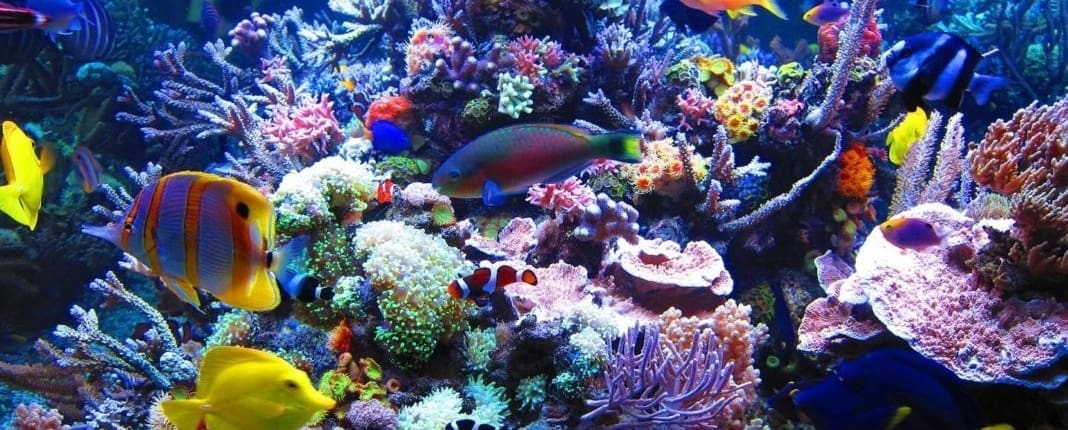How to Setup a Saltwater Aquarium
The Bigger the Aquarium, the Better
The first step to setting up a saltwater tank is choosing an aquarium. A glass tank is scratch resistant but heavy, and leaking is a concern. Larger tanks protect the aquarium’s inhabitants against changes in the tank. More water means you have more time to get ahead of any problem that might exist in the aquarium. Acrylic isn’t scratch resistant but is less likely to shatter. A minimum aquarium size of 20 gallons is suggested. Always rinse your tank to remove any dirt or debris before setting up your aquarium, and be certain to have a sturdy stand or surface to withstand the aquarium’s weight when filled. also poses a risk of shattering.
Interior Decor
Once you’ve chosen your tank, you’ll probably want a background to mimic a deep sea environment. Aquarium-safe rocks, such as limestone or lava rock will add to the marine appearance and can be glued to the tank’s bottom with an adhesive that is safe for use in aquariums. If you’re using an under-gravel filter, install the filter before the substrate and rock. Adding substrate, which includes rocks or sand, will begin to tie together the appearance of your aquarium. Proper substrates for a saltwater tank include crushed coral, dolomite or aragonite gravel. Sand should be used only if your choice of filters isn’t the under-gravel style.
Heating and Filtration
In a natural setting, waste products are easily washed away. In an aquarium setting, a filter is required to perform this job. Submersible heaters are available, as are heaters that clamp to the top of the aquarium. Install your heater according to the instructions provided, but regardless of the type of heater you choose, make certain the thermometer is visible. The recommended temperature range for a saltwater aquarium is between 75 and 82 degrees. Install your filter according to the manufacturer’s instructions. An under-gravel filter must be installed before substrate or rock is added. Additionally, a heater is necessary to mimic the ocean’s stable temperature.
Salinity and Stabilization
Once your tank is set up, it’s time to add water and salt. Prior to adding salt, add a small amount of water to make sure your tank is watertight. Add marine salt until the gravity level reaches 1.021. Use a hydrometer, your tank is ready for a 24- to 48-hour stabilization period and cycling which, when done properly, can take six to eight weeks. To protect your substrate and rock, pour the water into a bowl placed inside the tank, and allow it to overflow the bowl into the aquarium. Remove the bowl. Once you’ve determined the tank is free of leaks, add the remaining water and a water conditioner designed for saltwater tanks.

